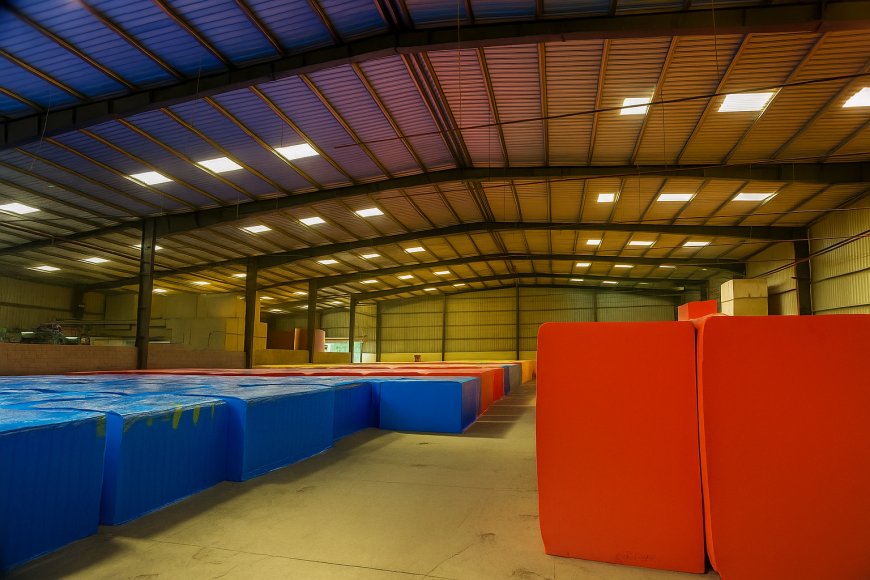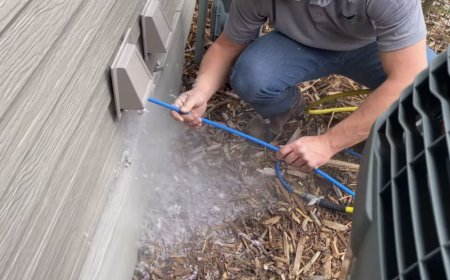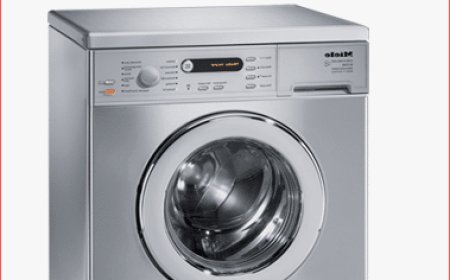Mastering Foam Density: Tips for Achieving Perfect Polyurethane Foam Production

For the best quality foam achieving the correct foam density is the most essential part of Polyurethane Foam Production. The right foam density is important regardless of whether you're making foam for furniture, insulation, automotive parts, or innocuous packaging. The density of foam determines how it performs in its end use - if the foam density is too high, it could be too stiff; if the foam density is too low, it might lack durability and strength. This blogging will discuss foam density importance and give advice on how to maintain a polyurethane foam making machine, which can help improve your production process and the foam products you manufacture.
What Exactly Is Foam Density and Why Should You Care?
Foam density is the amount of material in a certain amount of space or volume all available to contain the foam. The appropriate density is necessary to consider because it relates to the foam value (dimensions), flexibility, durability, and overall performance/characteristics. For instance, high-density foam gives you added support, durability, and longevity which is appropriate for applicable uses such as support for mattresses or cushions for comfort. Lower density foam is lighter and is most often used for packaging or insulation.
Foam density will differ per application. High-density foam provides a more durable product for the automotive or furniture industry, while in other application areas lighter foam density is preferred as it is less expensive and reduces weight. In general, getting the right thickness is essential in polyurethane foam production to ensure that the foam performs well in the intended application.
Problems with Trying to Make Foam with Consistent Density
Making foam with a consistent density can be challenging. Several factors can affect the production process and impact the result. A few potential issues include:
-
Ingredient Mix: The two key components to foam are polyol and isocyanate. These two key ingredients must be put together, simultaneously, in precise proportions to make foam. Uneven mixing will result in uneven density.
-
Temperature Variations: The production of polyurethane foam is chemical-based. Temperature is a significant part of the foam's chemical reaction. Significant temperature changes cause density to be inconsistent.
-
Mould Design: The design of the mould used to pour the foam into can also affect density. If the mould is poorly designed, or does not provide proper ventilation, foam expansion can happen unevenly and variable foam density can occur.
-
Machine Settings: If the machine settings are incorrect, or the equipment is not maintained properly, variations can occur in the final foam density.
Advice for Getting the Right Foam Density
To have consistent foam density has some challenges to successfully accomplish. Here is a list of tips for achieving the right thickness:
1. Properly Calibrate Your Machines
In order to guarantee that there is consistency in foam densities, one of the first priorities is to make sure that your pu foam manufacturing machinery is properly calibrated. If your equipment is not calibrated properly, the ratio of polyol to isocyanate can vary from one batch to the next which will create foam with inconsistent densities.
By utilizing the right polyurethane foam making machine with verifiable calibration and options for adjustment, manufacturers can make sure that they maintain appropriate ratios consistent with each batch. This allows urethane foam production to have a consistent density, while also ensuring the manufacturing process runs smooth and consistent.
2. Mix the Ingredients Properly
Properly mixing the ingredients is one of the first steps in achieving desired foam density. Polyol and isocyanate need to be combined in correct proportions to have flexible foam with uniform quality. Any deviation in the mixture will contribute to foam having inconsistent densities. This will affect performance as well as appearance.
Automated mixing systems are a great way to ensure that all ingredients are evenly blended; this way you can lessen the risk of inconsistencies. Automated mixing systems allow for the continuous monitoring and adjustment of the mixing process to develop a more uniform foam density.
3. Maintain Stable Temperature Control
Temperature is another important factor in polyurethane foam production. If the temperature is not properly controlled, it can lead to issues with foam density. High or low temperatures can cause the chemical reaction between polyol and isocyanate to behave unpredictably, resulting in foam that is either too dense or too light.
Investing in equipment that offers reliable temperature regulation can help manufacturers avoid these issues. Maintaining a consistent temperature throughout the production process helps ensure that the foam expands evenly, leading to more consistent density.
4. Focus on Mold Design and Ventilation
The mold design and proper ventilation are also crucial for consistent foam density. Molds that are poorly designed or lack adequate ventilation can lead to uneven foam expansion, causing air pockets or variations in density.
It is important to ensure that the mold allows for even foam expansion and proper airflow. Optimizing the mold design and ensuring good ventilation during the polyurethane production process can help reduce density issues and improve the overall quality of the foam.
5. Regularly Equipment Maintenance
PU Foam Manufacturing Machines used in the production need regular maintenance to keep them in good working order. Over time, equipment can become worn or misaligned, leading to inconsistencies in foam density. Regular inspections and timely repairs are essential to maintaining the accuracy and reliability of the production process.
Keeping your equipment well-maintained ensures that the polyurethane foam making machines operate at their best, reducing the chances of errors and inconsistencies. Routine checks can help identify any issues early, preventing them from affecting the foam quality during production.
How Technology Helps Improve Foam Density
In recent years, technology has played a significant role in improving the consistency of foam density. Modern PU foam manufacturing machines are designed to offer precise control over the production process, helping manufacturers achieve higher levels of accuracy and consistency.
Features like automated mixing, temperature regulation, and real-time monitoring make it easier to maintain the desired foam density. These polyurethane foam making machines also help reduce waste and improve efficiency by ensuring that the right ingredients are used in the right proportions and under the ideal conditions.
As foam production technology continues to advance, these tools are becoming more accessible, allowing manufacturers to produce high-quality foam more consistently and cost-effectively.
Conclusion: Achieving the Perfect Foam Density
Mastering foam density is key to high-quality polyurethane foam production that suits various applications. By following best practices like proper machine calibration, even mixing, temperature control, optimized mold design, and regular maintenance, manufacturers can ensure consistency. Investing in modern foaming equipment can further enhance control and efficiency, leading to better product quality. To streamline your production and achieve consistent foam density, consider exploring the latest advancements in PU foam manufacturing machinery.











































